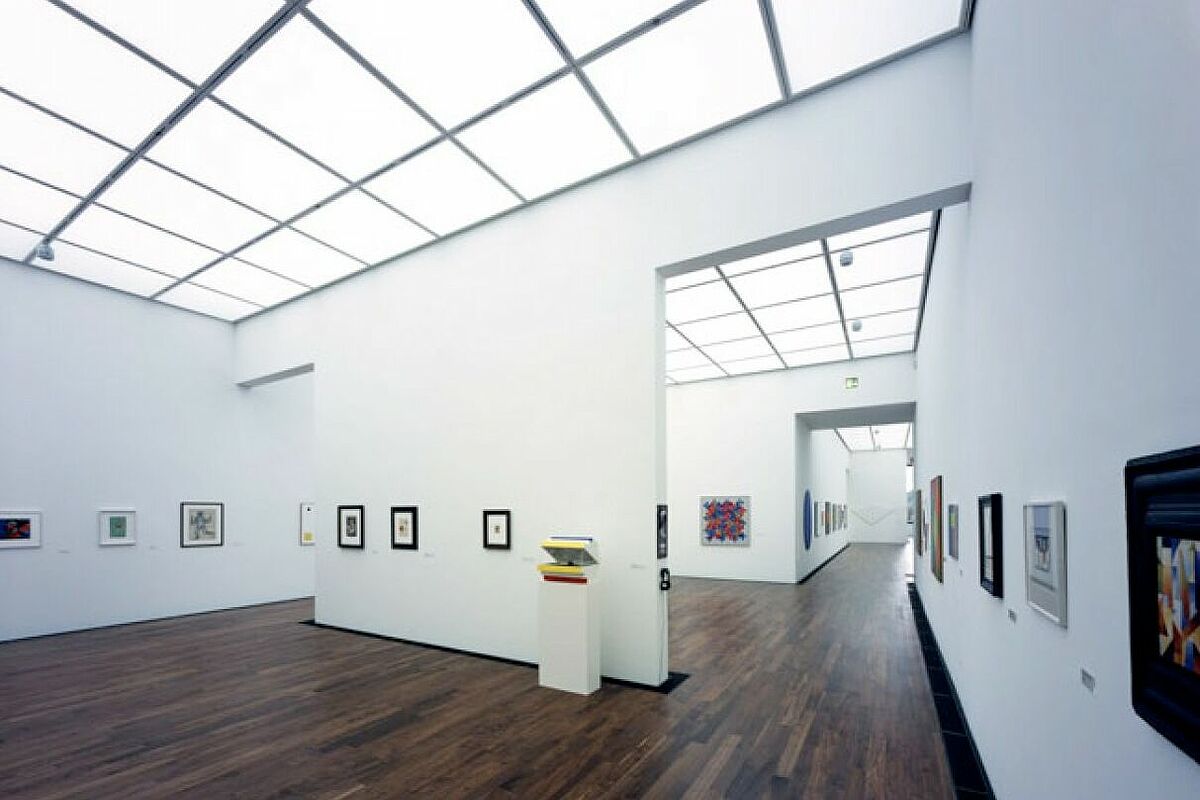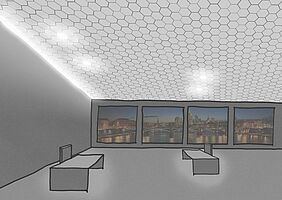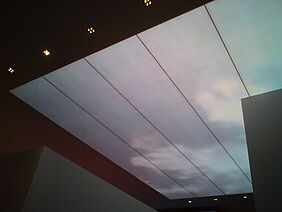Ceilings in general are of great importance for the interior design. They exhibit a seemingly conflictive and mystic character. Their function is to create visual boundaries and to provide a stable structure for the perception of the space. Bright ceilings create a link to the exterior, which lets the space appear more open. Consequently a luminous ceiling plays a major role in the perception of architecture and in turn becomes a luminous element for creating the atmosphere of an artificial sky.
This work shows the psychological importance of a bright ceiling within a space and defines different modern types of this kind of lighting technique considering the light source, diffuser material and visual appearance. Perception based tools like the change of colours, brightness, colour temperature, patterns or video content show the ability to transform the luminous ceiling itself and the space surrounding it.
For the comparison of the most common luminous ceiling types this research finds criteria among the categories perception, aesthetics and technology in order to evaluate them. Therefore the visual perception is not only defined by physical terms, but also through psychological processes which result also in the aesthetic judgement of the space and the luminous ceiling itself. The goal was to find out how the different types of luminous ceilings itself and the lit spaces as well are perceived. In a final matrix the luminous ceiling types will be evaluated and the most significant pros and cons summarised. The matrix can act as a guideline for lighting designers using the appropriate type of luminous ceiling for future projects and giving an orientation for the design process.
One of the result is that the different types of luminous ceilings provide varying spatial impressions and modern technologies are able to create new experiences of space with a potential of setting a new level for ceiling applications with high stimulation abilities. This thesis discusses the possible and most common applications for the specific luminous ceiling types and their problems. The found out deficits are mainly the handling of a luminous ceiling, the lack of personalisation of a luminous ceiling, a missing daylight integration for important application fields and the often poor possible interaction with the luminous ceiling.
For these issues alternatives and different approaches already exist, but the design proposals applying daylight, LEDs and OLEDs show alternative possibilities to solve some of the problems in the use of luminous ceilings. The ideas are based on the preceding discussions about perception, aesthetics and technology. Additionally they give an outlook for new application fields of luminous ceilings and should inspire for further discussions about new strategies for luminous ceilings. The findings are relevant for future projects in application fields like offices, hospitals or museums. The development of a perception suitable design concept for lighting in a space should be forced. Furthermore the ultimate merging of media and architecture has to be carefully analysed in further studies regarding the impact on the public space.



